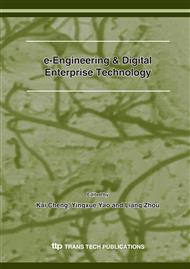p.900
p.905
p.909
p.913
p.918
p.923
p.928
p.934
p.939
Dynamic Stress Intensity Factor with Griffith – II Type Crack in Vibratory Machining and its Influence on Chip Formation
Abstract:
Reviewed the achievements and advances in the vibratory metal machining, analyzed the features and mechanics in microstructure with SEM. The dynamic stress intensity factor is derived on the basis of fracture mechanics and stress-wave theory with the Griffith- II type sliding-open crack.. Comparison between the vibratory machining and the conventional machining has been made with brass on lathe CW6150B, with computer controlled piezoelectric ceramic micro-drive system and cutting forces and surface texture of the specimen were observed. The dynamic stress intensity factor was discussed and it was found that the value of dynamic stress intensity factor may be high with response to the Heaviside impulsive loading, indicating the reason why vibratory machining has better comprehensive results than the conventional one does.
Info:
Periodical:
Pages:
939-944
Citation:
Online since:
December 2007
Price:
Сopyright:
© 2008 Trans Tech Publications Ltd. All Rights Reserved
Share:
Citation:


